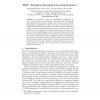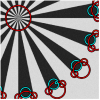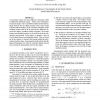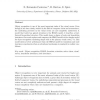119 search results - page 10 / 24 » Invariants for Non-Hierarchical Object Structures |
CORR
2010
Springer
13 years 4 months ago
2010
Springer
Abstract. In this paper, we show how to efficiently and effectively extract a rich class of low-rank textures in a 3D scene from 2D images despite significant distortion and warpin...
ICCV
2009
IEEE
15 years 10 days ago
2009
IEEE
This paper presents a novel method for detecting scale
invariant keypoints. It fills a gap in the set of available
methods, as it proposes a scale-selection mechanism for
juncti...
ICMCS
2006
IEEE
14 years 1 months ago
2006
IEEE
A near-planar object seen from different viewpoints results in differently deformed images. Under some assumptions, viewpoint changes can be modeled by affine transformations. Sh...
CVPR
2008
IEEE
14 years 9 months ago
2008
IEEE
letons to Bone Graphs: Medial Abstraction for Object Recognition Diego Macrini University of Toronto Kaleem Siddiqi McGill University Sven Dickinson University of Toronto Medial d...
IVC
2008
13 years 7 months ago
2008
Object recognition is one of the most important tasks of the visual cortex. Even though it has been closely studied in the field of computer vision and neuroscience, the underlyin...




